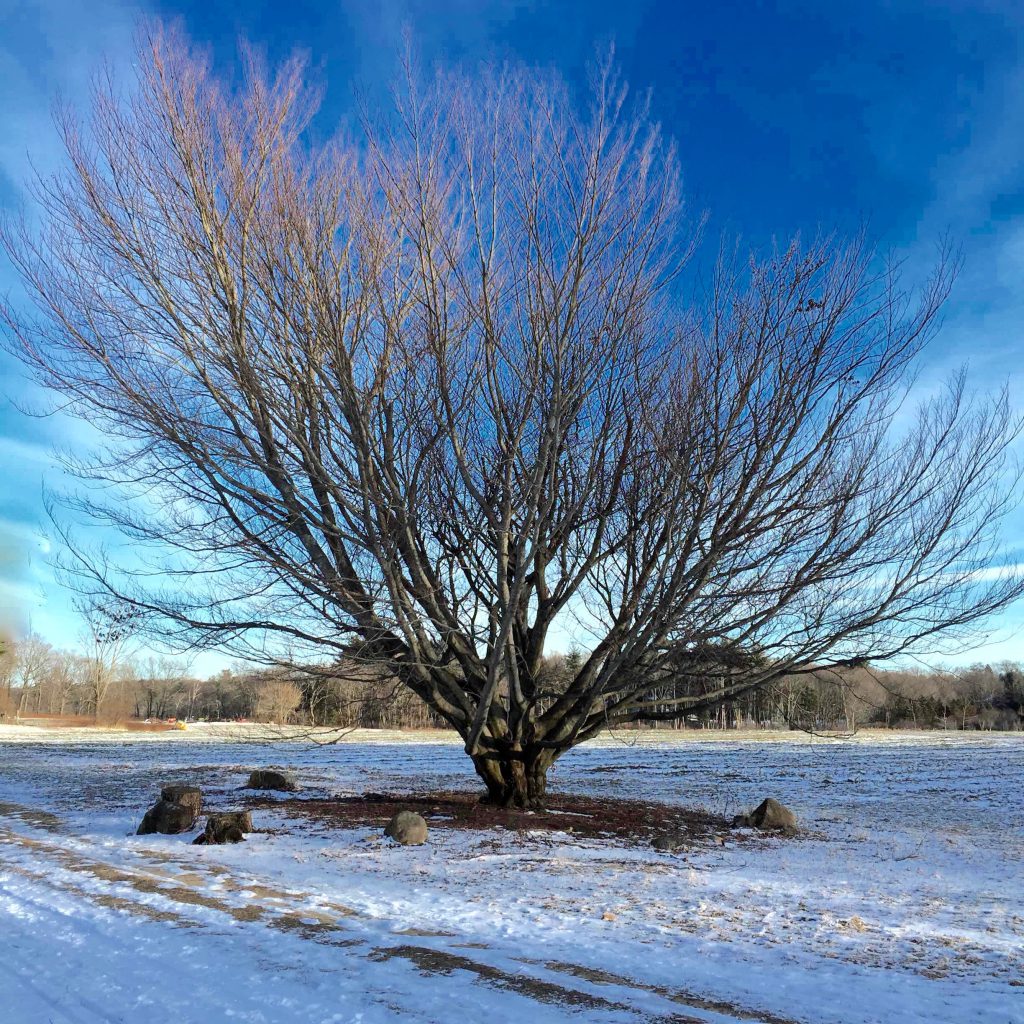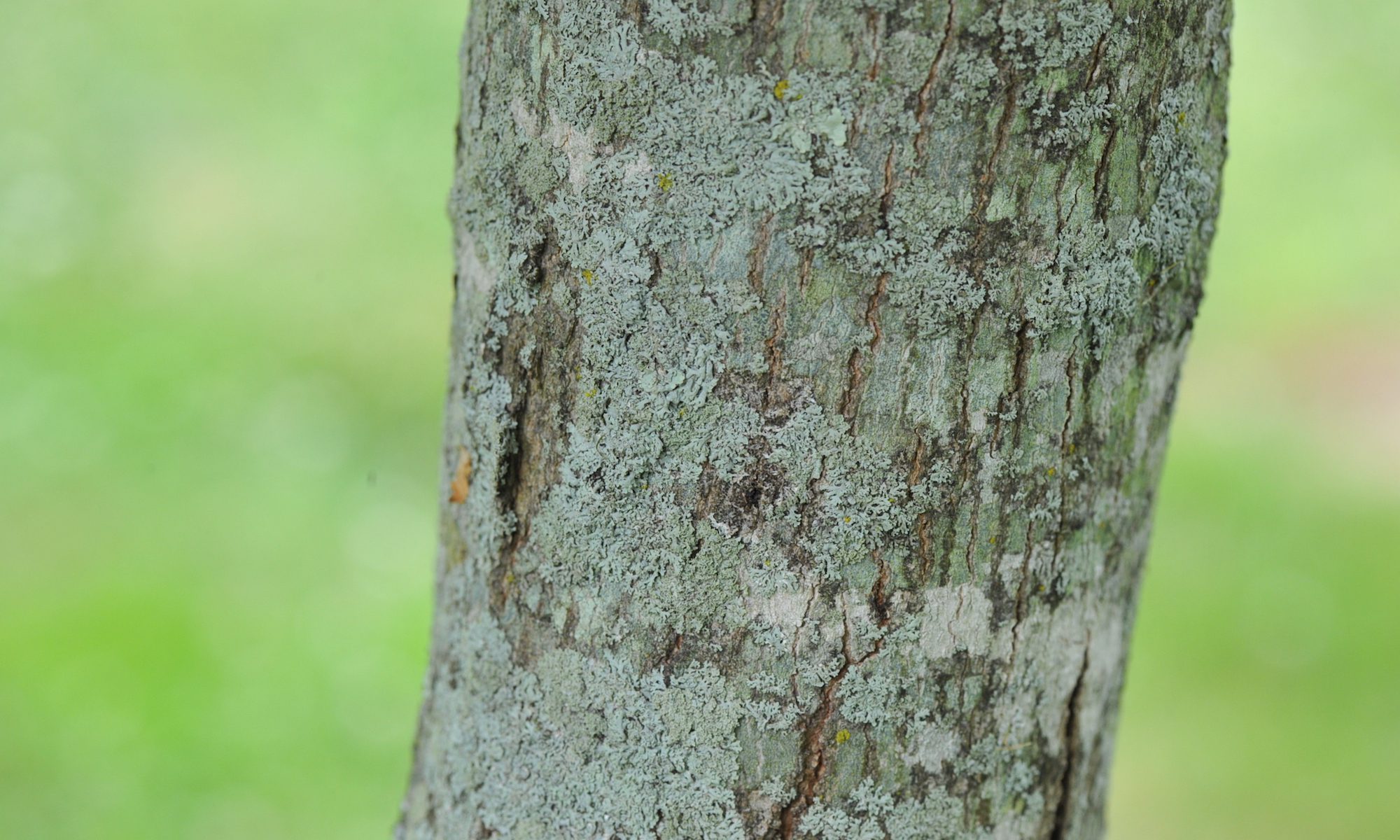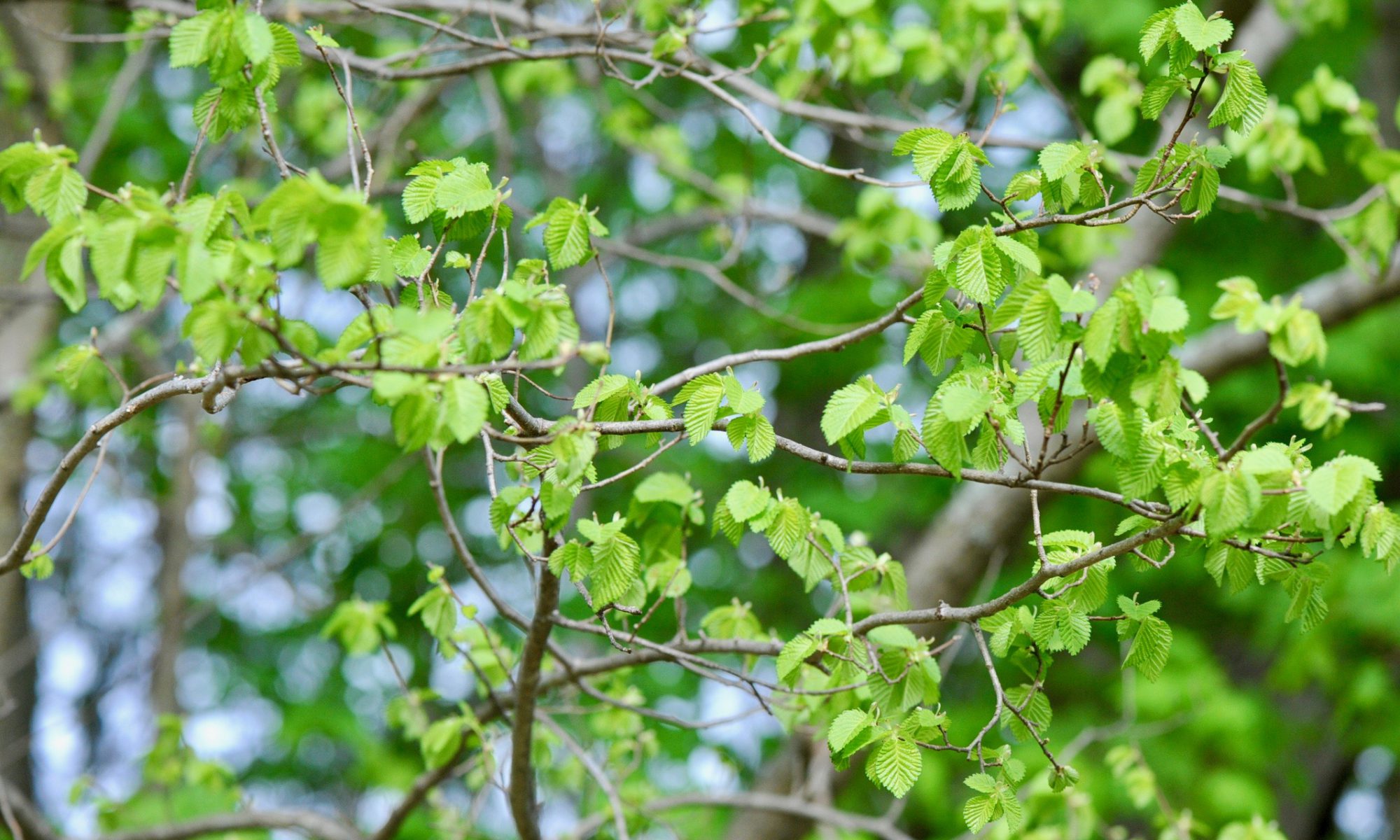The American Elm, the state tree of Massachusetts, was the predominant street tree in America. It was easy to plant and transplant, grew fast, its vase-like shape was great for urban areas, and its graceful branches arching like water fountains were a hit. Asian Elm bark beetles were accidentally brought to America in the 50’s and devastated the Elms by spreading a fungus that causes Dutch Elm Disease. Most Elms were not resistant and died. Their loss was a serious blow to communities.
Decades ago, a forest full of Elms stood in the grassy area that abuts Lindentree Farm. The seed bank in the soil doesn’t deny history. Every year dozens of saplings of the fast-growing Elms sprout out of the ground and dot the fields, looking like sturdy little bushes with very serrated, dark green leaves. Several small trees are growing at the edge of the forest. One is now 20’ tall. If nothing is done, it will probably die before reaching maturity. Lincoln fumigates 5 Elms in Town to keep them alive. One of them will be featured in the next Tree Tour. Stay tuned! Resistant Elm hybrids are now available, and some even retain the classic American Elm form.

American Elm wood is light in color, heavy, hard, strong and tough with interlocked grain. It was mainly used for veneer, boxes, crates, barrel staves and furniture parts. The name “Dutch Elm Disease” comes from the fact its cause was first identified by Dutch scientists.
VISIT THE EUROPEAN BEECH NEXT


